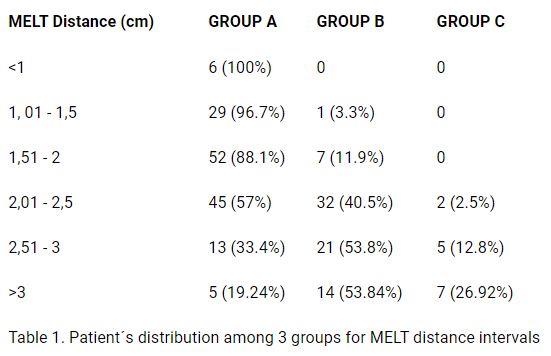MELT: A novel tool to select the most suitable patients for extreme hypofractionation
Luis Mateu Castell,
Spain
PO-1295
Abstract
MELT: A novel tool to select the most suitable patients for extreme hypofractionation
Authors: Jon Gadea1, Carlos Garcia Zanoguera2, Luis Mateu Castell3, Irene Ortiz Gonzalez4, Jose Pardo Masferrer5
1Hospital Universitari Son Espases, Radiation Oncology, Palma, Spain; 2Hospital Universitario Son Espases, Radiation Oncology, Palma, Spain; 3Hospital universitario Son Espases, Radiation Oncology, Palma, Spain; 4Hospital Universitario Son Espases, Radiation Oncology , Palma, Spain; 5Hospital Universitario Son Espases , Radiation Oncology, Palma, Spain
Show Affiliations
Hide Affiliations
Purpose or Objective
FAST-Forward trial reported that five-fraction radiotherapy (5fx-RT) schedule with 26Gy in adjuvant setting after breast-conserving surgery for early-breast cancer was non-inferior to the standard hypofractionation (SHfx) schedule with 40Gy in 15fx in terms of local tumor control. Since the COVID-19 pandemic started RT experts groups encouraged professionals to implement hypofractionated schedules in order to decrease patient visits to hospitals. The aim of this study is to help radiation oncologists choosing the most suitable patients for 5fx-RT schedule according to anatomical features.
Material and Methods
Between March 2020 and December 2021, 239 patients suitable for 5fx-RT schedule were referred to our department. Prescribed RT dose was 26Gy in 5fx to the whole breast plus a simultaneously integrated boost (SIB) up to 29Gy to tumor bed if indicated. Patients were divided into 3 groups: Group A: Patients treated with 5fx-RT schedule that met all the FAST-Forward constraints for normal tissues; Group B: Patients treated with 5fx-RT schedule that slightly did not meet all constraints, Group C: Patients switched to SHfx schedule as they did not meet constraints in an acceptable way. For each patient, we draw an imaginary straight line connecting the medial and lateral borders of PTV in the axial slice of simulation CT where the longest anteroposterior diameter was found. From midpoint of this line, we measured the tangent distance to PTV margin and collected the data as medial-to-lateral tangent (MELT). In addition, breast, ipsilateral lung and heart volumes (cm3) were also recorded. Data were analyzed using SPSS software.
Results
150 patients were included in group A, 75 in group B and 14 in group C. The median MELT distance was: 1.91cm, 2.48cm and 3cm respectively (Figure 1). We found that the increase in MELT distance was significantly associated with a poorer compliance of normal tissue constraints (p<0.0001). Patient´s distribution among 3 groups for MELT distance intervals are shown in table 1. Median V8 for ipsilateral lung was: 13.1, 15.46 and 20.49% for groups A, B and C respectively. For the heart, median mean dose was: 1.06, 1.8 and 2.25Gy for left breast cancer patients and 0.28, 0.33 and 0.48Gy for right breast cancer patients for groups A, B and C respectively. We found a moderate positive correlation between MELT distance and dosimetric parameters assessed above (r=0.545, 0.475 and 0.418 respectively). According to laterality, for a higher MELT distance the % of left-breast cancer patients increased significantly (p=0.039). Patient´s age, receiving a SIB and organs volumes were not associated with an increased MELT distance.


Conclusion
According to our findings, MELT distance is an easy tool that helps radiation oncologists predicting which breast cancer patients are the most suitable for 5fx-RT before RT planning begins. This could avoid delays in starting RT for patients with a high MELT distance directly planning them with the SHfx schedule.